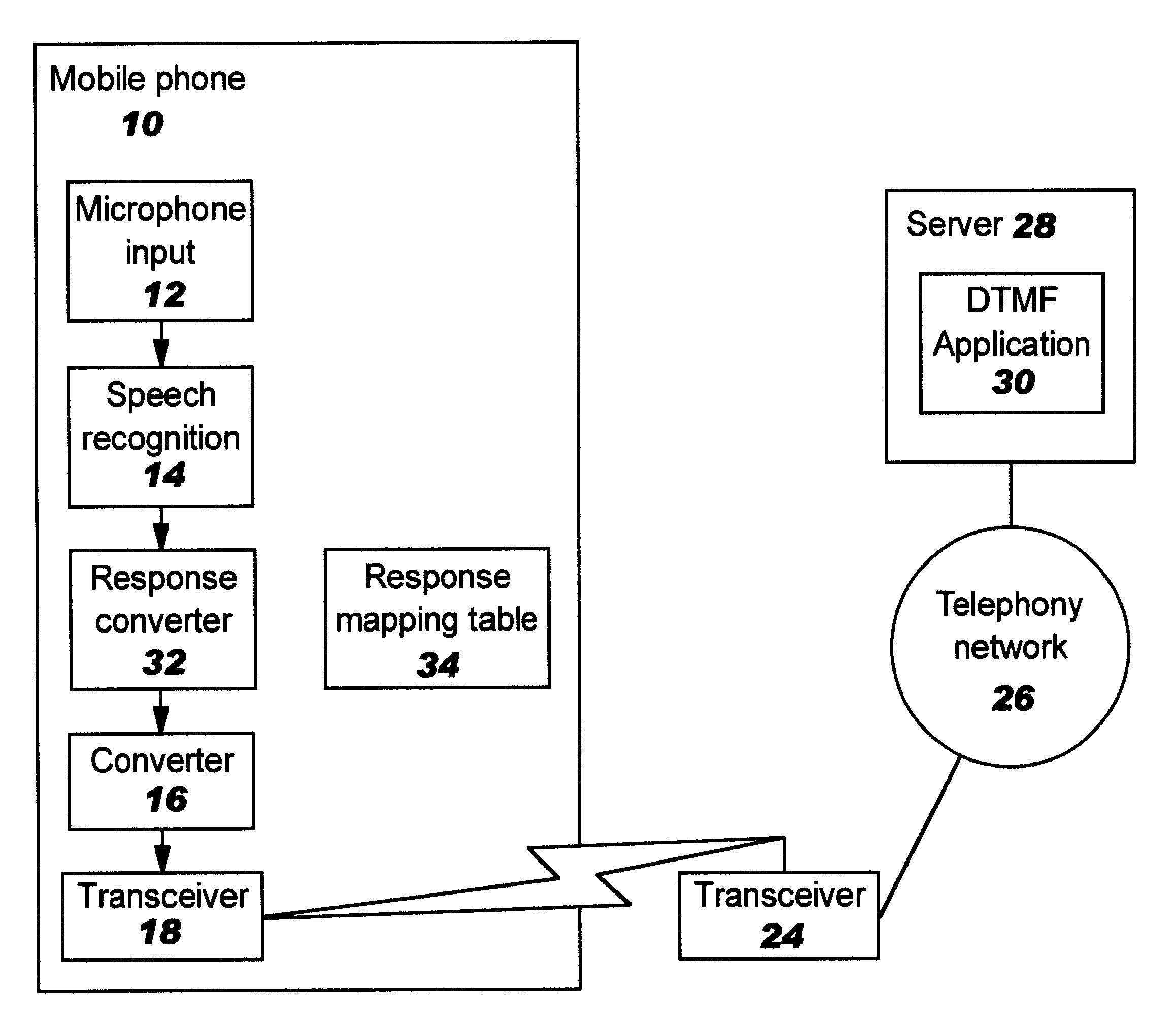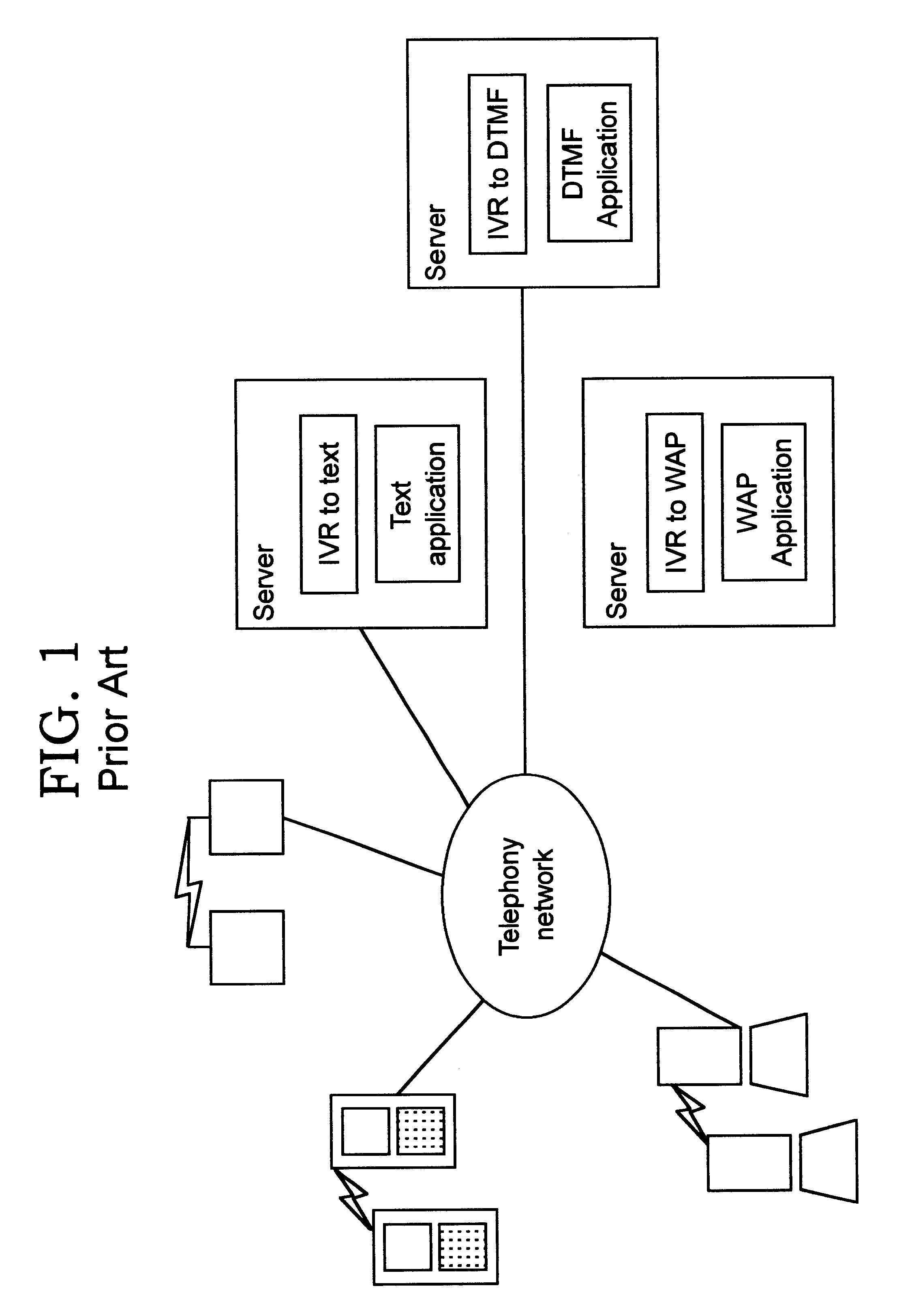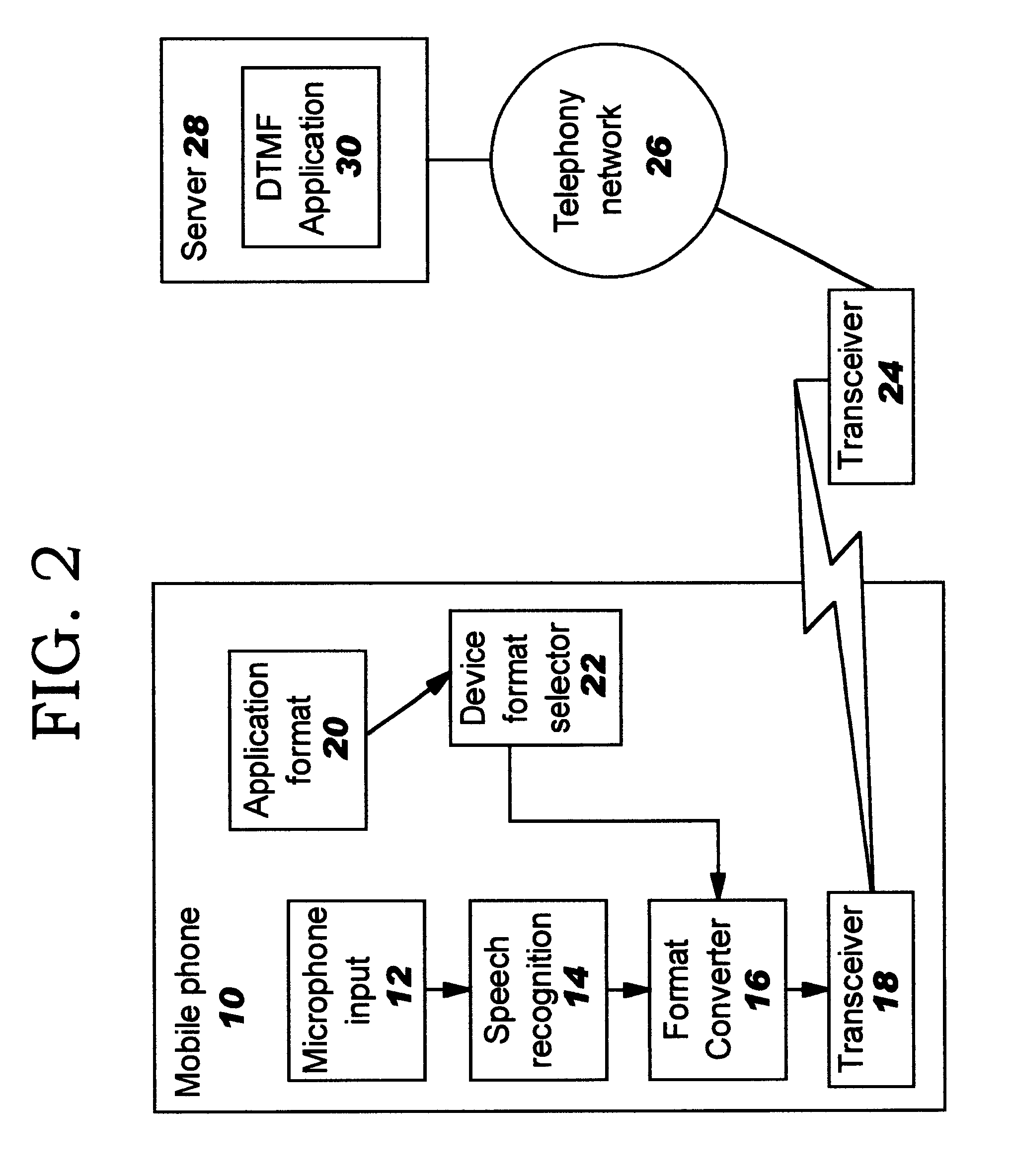Speech encoding in a client server system
- Summary
- Abstract
- Description
- Claims
- Application Information
AI Technical Summary
Benefits of technology
Problems solved by technology
Method used
Image
Examples
Embodiment Construction
Referring to FIG. 2 there is shown a mobile phone 10 comprising a microphone input 12, speech recognition unit 14, format converter 16, transceiver 18, application format memory 20 and device format selector 22. Receiving signals from the transceiver 18 is transceiver unit 24 connected through a network 26 to server 28. Server 28 comprises IVR application 30 accepting DTMF tone input.
The microphone 12 detects speech from a user and passes on a voice signal to speech recognition unit 14. The speech recognition unit 14 converts the voice signal from the microphone into a text signal which is passed on to the format converter 16. Speech recognition in the device is provided by a dedicated or shared digital signal processor (DSP). The recognition capabilities are limited by the MIP rate and memory (DRAM and IRAM) of the DSP. The unit 14 is speaker independent. Alternatively the unit is speaker dependent in which case a stand alone training capability is required to improve the speech re...
PUM
 Login to View More
Login to View More Abstract
Description
Claims
Application Information
 Login to View More
Login to View More - R&D
- Intellectual Property
- Life Sciences
- Materials
- Tech Scout
- Unparalleled Data Quality
- Higher Quality Content
- 60% Fewer Hallucinations
Browse by: Latest US Patents, China's latest patents, Technical Efficacy Thesaurus, Application Domain, Technology Topic, Popular Technical Reports.
© 2025 PatSnap. All rights reserved.Legal|Privacy policy|Modern Slavery Act Transparency Statement|Sitemap|About US| Contact US: help@patsnap.com



